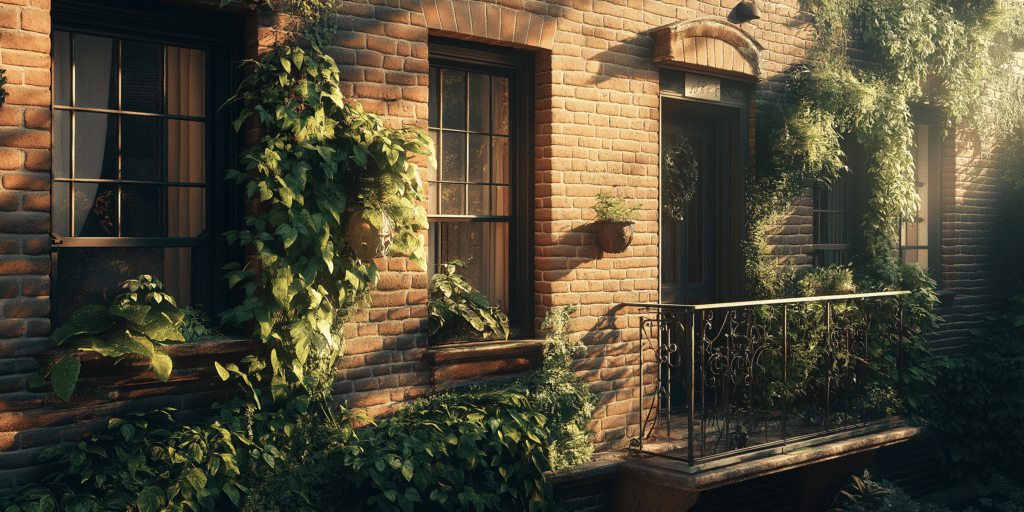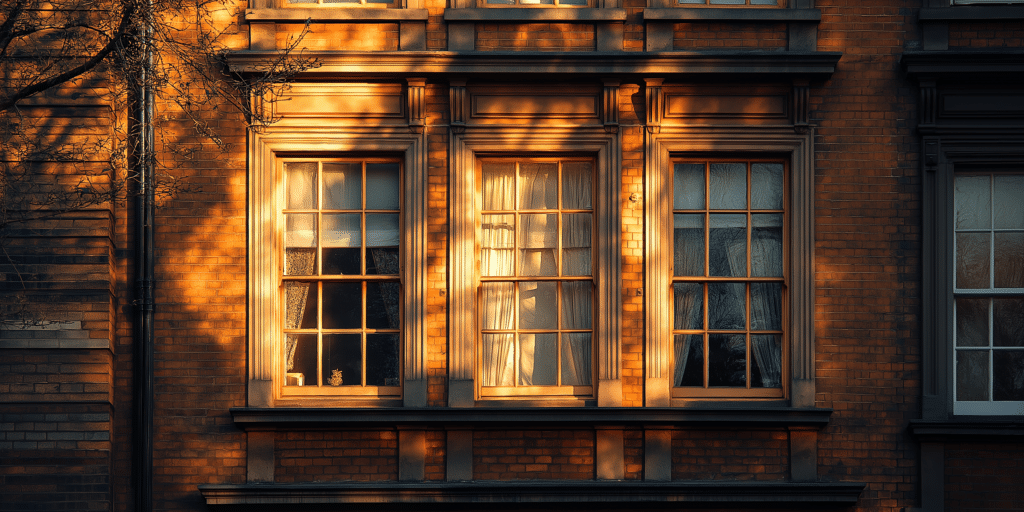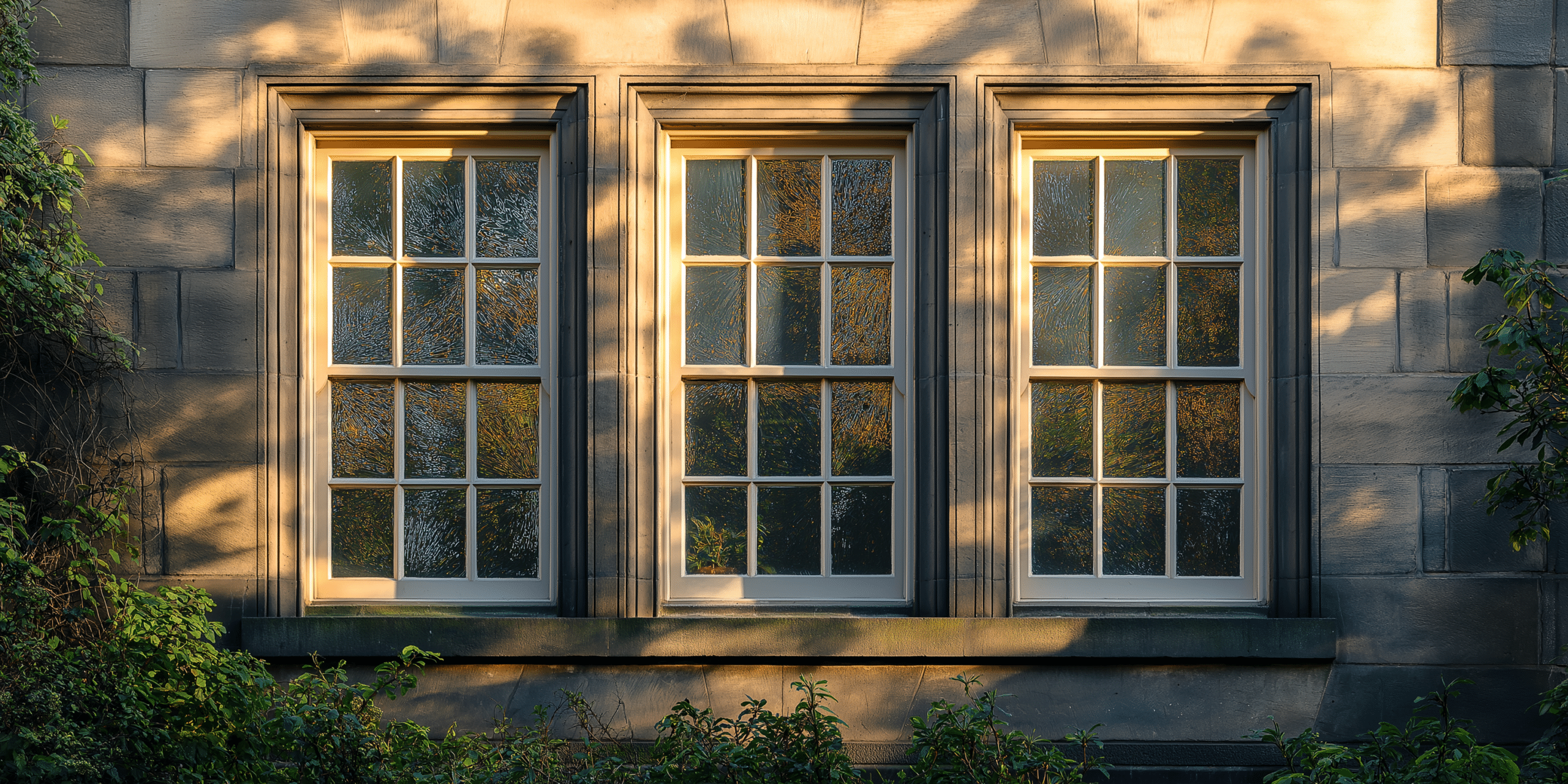What is U-Value and Why is it Important?

In today’s push for energy efficiency, the U-Value of sash windows has become a crucial consideration for homeowners, especially those in the UK with older or historical properties. But what exactly does U-Value mean? In technical terms, the U-value measures thermal transmittance—indicating how well a window or material can retain heat. Essentially, the lower the U-value, the better the insulation, meaning fewer heat escapes and higher energy efficiency is higher.
Traditional sash windows, commonly found in Georgian, Victorian, and Edwardian homes, have relatively high U-Values due to their single-pane glass and timber frame construction. While these elements offer aesthetic charm, they lack the insulating power of modern materials like Low-E glass or uPVC.
According to the British Woodworking Federation (BWF), modern sash windows can achieve U-Values between 1.2 and 1.6 W/m²K using double or triple glazing, depending on the glass type and frame material. However, homeowners interested in maintaining their property’s architectural character can consider U-Value improvement techniques, such as secondary glazing and draught-proofing, to improve insulation without sacrificing style.
Why Does U-Value Matter for Sash Windows?
Lower U-Values help retain heat within the home, enhancing comfort while reducing heating costs. In British homes, especially in colder regions, optimising window U-Values can lead to substantial savings on energy bills, often up to 20% annually. The Energy Saving Trust notes that upgrading old sash windows can reduce heat loss by 15–20%, depending on the materials and insulation techniques used. Additionally, with the UK’s carbon reduction targets and growing regulations around sustainable building practices, improving U-Values aligns with broader environmental goals, contributing to a greener home and community.
How is U-Value Calculated?
Calculating the U-Value of a sash window requires considering the conductivity of the glass, frame materials, and any insulation layers. According to Kevin Underwood, Technical Advisor at BWF, the accuracy of U-Value calculations relies heavily on certified tools that factor in material variances and design elements. While homeowners can use online U-Value calculators, a professional assessment is recommended for the most accurate results, factoring in specific aspects of each window’s design and material.
The Unique Case of Sash Windows in the UK

Traditional sash windows present unique challenges and opportunities for energy efficiency. Unlike modern casement or tilt-and-turn windows, sash windows typically use single-pane glass and a wooden frame, resulting in higher U-Values. Maintaining historical integrity is often crucial in listed buildings or properties in conservation areas. Secondary glazing and other retrofitting options for these structures can significantly reduce U-Value without altering the external appearance, as highlighted by Historic England. The organisation recommends secondary glazing as an effective solution to lower U-Values to modern standards without compromising historical aesthetics.
Top Techniques for Reducing U-Value in Sash Windows
- Secondary Glazing: Adding secondary glazing to single-pane windows creates an insulating air layer, reducing the U-Value. This option is ideal for listed buildings, as it leaves the original windows intact while providing improved insulation. Heritage and Historic Preservation Consultant Janine Stone confirms that secondary glazing balances energy efficiency with preserving historical value.
- Low-E Glass and Double Glazing: Retrofitting sash windows with Low-E (Low Emissivity) glass, which reflects heat back into the room and improves U-Values without compromising natural light. The British Fenestration Rating Council (BFRC) notes that Low-E glass with double glazing can achieve U-Values as low as 1.2 W/m²K, offering significant energy savings and improved comfort.
- Weatherproofing and Draught-Proofing: Installing draught-proofing strips around the sash window perimeter reduces air leakage, indirectly enhancing the U-Value. According to Energy Saving Trust, draught-proofing can increase energy efficiency by up to 10% in older sash windows.
- Insulated Frames: Upgrading to insulated frames or adding thermal breaks within wooden frames enhances U-Value but may require more invasive professional installation. Insulated timber frames improve U-Values considerably, especially when combined with double or triple glazing.
Where to Start with U-Value Improvements for Your Sash Windows
Deciding where to begin with U-Value improvements can seem daunting, especially for homeowners new to energy efficiency upgrades. A good starting point is assessing the current U-Value of your sash windows. The Glass and Glazing Federation (GGF) suggests beginning with a simple infrared test to locate areas of high heat loss, noting that “identifying problem areas can help homeowners prioritise the most impactful improvements.”
Once areas of heat loss are identified, you can decide between secondary glazing, draught-proofing, or Low-E glass. Secondary glazing is ideal for heritage properties, offering significant U-Value reduction without altering the window’s external appearance. This approach not only helps meet energy targets but also preserves property aesthetics.
When more substantial improvement is required, professional U-Value calculation is recommended. Using a certified assessor who can calculate the exact U-Value of each window and provide targeted solutions. Precision U-Value calculation helps to ensure compliance with building regulations and maximises energy savings.”
U-Value Regulations for Sash Windows in the UK

In the UK, regulations for window U-Values are becoming increasingly strict as the government pushes for better energy efficiency standards. U-Values for windows generally must meet or exceed 1.6 W/m²K for new builds and major renovations. However, exceptions apply to listed buildings or those in conservation areas. Historic England explains, “While heritage properties have exemptions, efforts should still be made to improve U-Values where feasible to contribute to environmental goals.”
Homeowners considering an upgrade must know these regulations to avoid compliance issues. Building Regulations Part L outlines energy efficiency standards for new construction and major refurbishments and requires property owners to take “all reasonable steps to improve U-Values.” Non-compliance can affect future property valuations and resale.
Calculating Cost Savings from Improved U-Values
Lowering the U-Value of sash windows can translate directly into cost savings on energy bills. Studies from The Energy Saving Trust suggest that by reducing a home’s average U-Value from 5.0 to around 1.5 W/m²K, households could save between £150 and £250 per year on heating bills, depending on the property size and existing insulation. These savings are even more significant during particularly cold UK winters.
Additionally, upgrading sash windows with double glazing or Low-E glass can save up to 20% on energy costs annually, especially in homes with older, single-pane windows. This improvement is particularly impactful in homes with larger window areas, where heat loss is substantial.
Investing in U-Value improvements offers an excellent return on investment in energy savings and increased property value over time. For heritage homes, maintaining the balance between aesthetics and energy efficiency is key, and U-Value improvements can make a real difference in long-term savings.
Choosing the Best Glazing for Optimal U-Value
When it comes to choosing glazing options, the U-Value is a critical factor. Double glazing with Low-E coatings can achieve U-Values around 1.1 to 1.4 W/m²K, which balances thermal efficiency and light transmission. This option is ideal for most homeowners who want to improve energy efficiency without significantly darkening their interiors.
For those seeking higher insulation levels, triple glazing is another option, though it often requires a heavier frame and increased installation costs. Kevin Underwood from the British Woodworking Federation states, “While triple glazing provides the lowest U-Values, it’s often unnecessary unless homeowners want to achieve Passivhaus standards.” For sash windows, double glazing combined with draught-proofing and quality frame materials offer optimal results for most UK homes.
Maintaining U-Value Efficiency Over Time

After investing in U-Value improvements, maintenance is key to preserving energy efficiency. Regularly checking seals, cleaning frames, and addressing wear promptly can prevent energy loss. The Glass and Glazing Federation notes that “a well-maintained window retains its U-Value longer, as damaged seals or worn frames can increase heat loss significantly.”
Homeowners should perform seasonal checks, particularly before winter, to seal windows adequately. Proper maintenance can extend the life of window improvements and continue to deliver cost savings. Addressing minor issues like worn draught-proofing strips or slight misalignment promptly can make a big difference.
Sash Windows and Sustainability Goals in the UK
Improving U-Values in sash windows reduces energy consumption and supports the UK’s broader sustainability targets. The Energy Saving Trust explains that “residential heating contributes significantly to national greenhouse gas emissions, and improving window insulation is a straightforward way to reduce a home’s environmental footprint.”
Retrofitting sash windows for lower U-Values aligns with national carbon reduction targets, helping to create more sustainable communities. By lowering the U-Value of older sash windows, homeowners contribute to a cleaner environment, reduce reliance on heating, and can even improve indoor air quality. Historic England comments, “For heritage properties, balancing energy efficiency with preservation is crucial, and well-executed window improvements can meet both goals.”
Final Thoughts: Enhancing Sash Window U-Values for a Greener Home
For British homeowners, optimising the U-Value of sash windows offers an effective way to improve energy efficiency, enhance comfort, and contribute to environmental sustainability without compromising the architectural integrity of their homes. Experts like Historic England and the Glass and Glazing Federation noted that implementing U-Value improvements such as secondary glazing, Low-E glass, and draught-proofing preserves heritage charm while boosting thermal performance.
Each step in the U-Value improvement process—from the initial assessment to the choice of glazing—plays a crucial role in achieving long-term energy savings and reducing carbon emissions. The Energy Saving Trust reminds homeowners, “Simple improvements to older windows can yield energy savings and environmental benefits, all while preserving the unique character of heritage properties.”
In summary, achieving lower U-Values in sash windows is about meeting regulatory standards and creating a more comfortable, cost-efficient, and sustainable home. By understanding the role of U-Value in energy performance and taking targeted action to improve it, homeowners can enjoy a more efficient living environment while honouring the timeless appeal of traditional sash windows.




